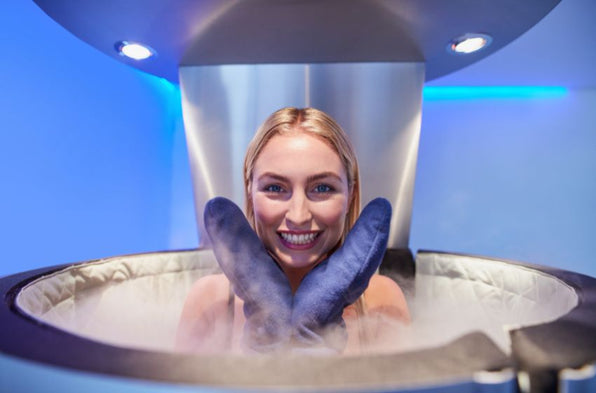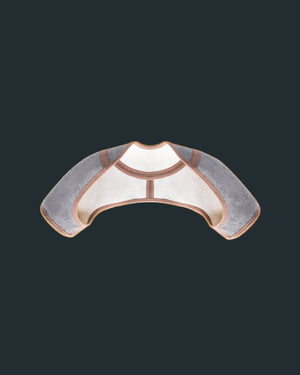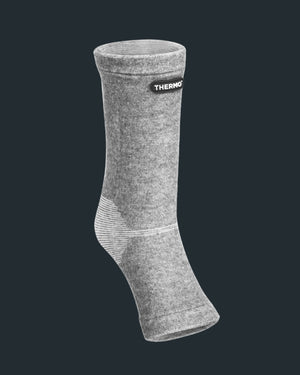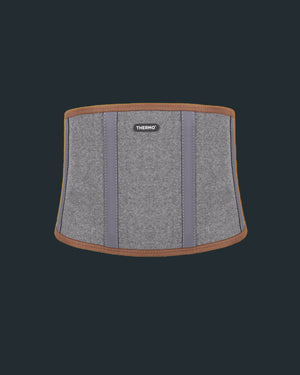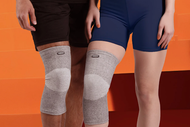Explore nine controversial recovery techniques in the fitness world. Understand their pros and cons and why they spark debates among athletes and experts.
As athletes strive for optimal performance, a myriad of recovery strategies has emerged, each with its own proponents and skeptics.
This article examines nine such techniques, shedding light on the benefits, potential risks, and the ongoing debates surrounding their effectiveness.
What Makes a Recovery Technique Controversial?
Recovery techniques are seen as controversial when the evidence supporting their efficiency is mixed or when they come with potential risks that may outweigh their benefits. Often, these techniques are shrouded in debate due to insufficient research, creating uncertainty among athletes and fitness enthusiasts about their effectiveness.
For instance, some techniques might offer significant benefits, such as reducing muscle soreness or improving blood flow. But at the same time, they may expose users to potential harm, like nerve damage or tissue hypoxia.
Others might have apparent immediate positive effects, but their long-term impact on muscle strength and overall well-being remains unclear or unproven.
Furthermore, the controversy can stem from the technique's implementation. A method might work well under specific circumstances or for certain individuals but show little to no effect in other contexts or among other demographic groups.
In the end, what makes a recovery technique controversial often boils down to a juggling act between potential benefits, potential risks, how well those are understood, and how effectively they can be managed or controlled.
This is why it's paramount for athletes to critically assess any recovery technique before adding it to their training regimen.
9 Controversial Recovery Techniques
Here are the techniques that are surrounded by debate regarding recovery.
1. Blood Flow Restriction Training (BFRT)
Blood Flow Restriction Training (BFRT) is a contentious technique gaining traction among athletes and fitness enthusiasts. The method involves partially restricting blood flow to muscles during low-intensity resistance exercise, aiming to boost muscle growth with less strain on joints.
It's touted for its potential to stimulate growth hormones, improve performance, and promote significant muscle gains akin to traditional high-intensity training. The reduced load can also make it a favorable option for injury recovery or individuals with joint limitations.
However, concerns about its safety persist. Improper application of restrictive cuffs can lead to nerve damage, tissue hypoxia, or exacerbated muscle soreness.
Also, while some studies support its benefits, others call its long-term safety and effectiveness into question, suggesting that further research is needed.
Therefore, while BFRT may seem an attractive option for gaining muscle strength without heavy resistance training, it's crucial to proceed with caution, understanding the risks and potential side effects thoroughly before incorporating it into a training regimen.
2. Contrast Therapy
Contrast Therapy, another recovery strategy often utilized but still met with skepticism, involves alternating between hot and cold exposures. The theory behind this method suggests that swift temperature changes stimulate blood flow, promote the removal of waste products from muscles, and aid in the post-workout recovery process.
Many users appreciate the potential benefits, such as improved circulation and pain relief. The contrasting temperatures can also be invigorating, offering mental benefits apart from the physical recovery proposed.
Despite these potential benefits, the effectiveness of Contrast Therapy is still up for debate. Research provides mixed results; while some studies reveal improvements in recovery, others show little to no significant impact. The method also poses logistical challenges, making it unwieldy to implement at home.
Moreover, the exact mechanism underlying the supposed benefits of Contrast Therapy remains unclear, further fueling the controversy. So, while some athletes use this method in their recovery strategies, others await more definitive research before exploring this route.
3. Massage Guns
Massage guns are a relatively recent addition to the market and have quickly become a point of discussion in recovery discourse.
They offer deep tissue stimulation, believed to enhance muscle recovery, reduce soreness, and improve blood flow. Their portability and convenience make them popular among athletes, allowing targeted relief for specific muscle groups.
The benefits of massage guns seem appealing. However, the scientific backing behind these compact devices could be more robust. While preliminary research shows promising signs of improved circulation and reduced muscle stiffness, comprehensive data on long-term effects and effectiveness still needs to be provided.
Another area of concern is potential misuse. Incorrect use or excessive pressure can cause muscle damage or bruising, raising questions regarding safety, especially for unsupervised home usage.
Lastly, their relatively high cost and the individual variability in their effectiveness make it a controversial solution despite the convenience.
Consequently, while massage guns might seem like a handy tool for muscle recovery, it’s essential to use them judiciously and under professional guidance when possible.
4. Sleep Aids
Sleep, a cornerstone of overall well-being and athletic performance, is an important aspect of recovery from exercise-induced muscle damage. Recognizing this, athletes often turn to sleep aids to ensure a restful night and promote optimal recovery. These aids range from natural remedies and supplements, like melatonin, to prescription medications.
Sleep aids promise to enhance sleep quality and duration, factors known to support the body's natural recovery process. A good sleep cycle can help decrease muscle soreness, facilitate muscle growth, and even improve performance during subsequent training sessions.
However, the usage of sleep aids is not without controversy. For starters, while some sleep aids can indeed help to induce sleep, they may not necessarily improve the quality of that sleep, which is crucial for muscle recovery. Over-reliance on aids can also lead to dependency, undermining the body's natural sleep mechanisms.
Furthermore, the use of prescription sleep aids often comes with side effects, such as grogginess, impaired cognitive function, and potential interactions with other substances or drugs. Therefore, the decision to use sleep aids must involve a careful weighing of the potential benefits against these potential risks.
5. Cryotherapy
Cryotherapy, also known as cold therapy, is a frequently debated recovery technique. The principle behind it lies in the application of cold temperatures, often through ice baths or other cold modalities, to reduce inflammation and alleviate muscle soreness after intense training sessions.
Some of the potential benefits of cryotherapy include a reduction in inflammation, temporary pain relief, and a boost to mental resilience, as enduring the discomfort of the cold can be seen as a test of willpower.
However, the effectiveness of cryotherapy is a topic of ongoing debate. While some studies suggest it can aid in quick recovery, others show minimal to no effect. The benefits tend to be short-lived, requiring frequent applications for sustained results.
Additionally, the comfort factor—or lack thereof—cannot be dismissed. The discomfort of immersing oneself in ice-cold water is not universally appreciated. Plus, there are potential health risks for individuals with certain medical conditions, rendering it an unsuitable option for many.
Therefore, while cryotherapy might be a part of some athletes' recovery strategies, its efficiency is not universally agreed upon, making it a controversial technique in the realm of muscle recovery.
6. Anti-Inflammatories
The use of anti-inflammatory drugs as a recovery technique is another contentious topic. Nonsteroidal anti-inflammatory drugs (NSAIDs), such as ibuprofen, are commonly used by athletes to manage pain and reduce inflammation after intense physical activity.
Anti-inflammatories can indeed provide short-term relief by reducing muscle soreness and swelling, which may indirectly improve performance during subsequent training sessions.
However, these drugs don't come without risks. Regular use of NSAIDs can lead to gastrointestinal problems, increased risk of heart issues, and impaired kidney function.
Importantly, some studies suggest that regular use of anti-inflammatories can inhibit muscle growth, potentially negating some of the gains achieved through strength training.
Additionally, the reduction of inflammation, a natural part of the body's recovery process, might not always be beneficial. Inflammation is a part of the body's response to injury, playing a role in healing and adaptation. By artificially reducing inflammation, we might be interfering with this process.
As such, while anti-inflammatories can provide temporary relief from exercise-induced muscle damage, their regular use as a recovery strategy is a matter of ongoing debate.
7. Foam Rolling
Foam rolling is a self-myofascial release technique that has become popular among athletes. By using a foam roller over specific muscle groups, individuals can apply pressure to relieve muscle tightness, improve flexibility, and aid post-workout recovery.
Proponents of foam rolling praise its benefits, such as reduced muscle soreness, improved circulation, and enhanced mobility. It's also relatively easy to incorporate into a training regimen and requires minimal equipment, making it a convenient option.
Despite the popularity of foam rolling, its standing as a recovery technique isn't universally accepted. While some research supports its benefits, others suggest any improvements to performance or recovery are minimal. This discrepancy in studies has fueled a debate about its true effectiveness.
Moreover, there's the potential for misuse. Improper foam rolling techniques can lead to muscle strain or even injury, highlighting the need for proper guidance when using this tool.
Therefore, while foam rolling is a common feature in many athletes' recovery processes, its efficacy remains a contentious topic in the sports and fitness community.
8. Protein Timing
Protein timing, or consuming protein at specific intervals in relation to a training session, is often adopted by athletes aiming to optimize muscle growth and recovery.
The premise is that consuming protein, particularly immediately after workouts, can boost muscle protein synthesis and promote recovery.
This technique hinges on the belief that there's a window of opportunity—commonly referred to as the 'anabolic window'—following exercise, during which the body is primed for nutrient absorption.
However, the effectiveness of protein timing remains a topic of robust debate.
While some research supports this method, stating that proper protein timing can contribute to improved muscle recovery and growth, other studies argue that total daily protein intake is more important than the timing of its consumption.
Moreover, an overemphasis on protein timing may lead to unnecessary stress and overly complicated eating schedules, which can be counterproductive to an athlete’s well-being and performance.
Consequently, while protein timing is a widely practiced technique, the controversy surrounding its actual impact on muscle recovery continues.
9. Using Copper-infused Garments
The use of copper-infused garments as a recovery tool is gaining attention but remains a controversial technique. These garments, often marketed as activewear, compression gear, or sleepwear, are said to aid in muscle recovery and performance enhancement.
The proponents of these garments suggest that copper has anti-inflammatory properties and can stimulate blood flow, potentially easing muscle soreness and promoting quicker recovery from exercise-induced muscle damage.
Additionally, the compression factor of these garments is believed to enhance circulation and reduce muscle swelling.
Despite these claimed benefits, there's considerable debate over the effectiveness of copper-infused garments. The scientific evidence backing these claims is limited, and the concept could be more proven.
While a few studies suggest a potential benefit, many experts argue that any observed effects could be attributed to the compression aspect of the garments rather than the presence of copper.
Moreover, these products often come with a higher price tag than regular compression wear, raising questions about their cost-effectiveness.
Therefore, until further research supports these claims, using copper-infused garments as a recovery strategy remains a contentious subject.
Final Words
The effectiveness of these controversial recovery techniques can vary greatly based on individual factors and application.
Athletes must understand the implications, seek professional guidance, and make informed decisions about integrating these methods into their recovery regimen.
Fortunately, the use of Thermo Recovery Wear and many other recovery techniques are proven and tested. Browse our storefront to learn more.
